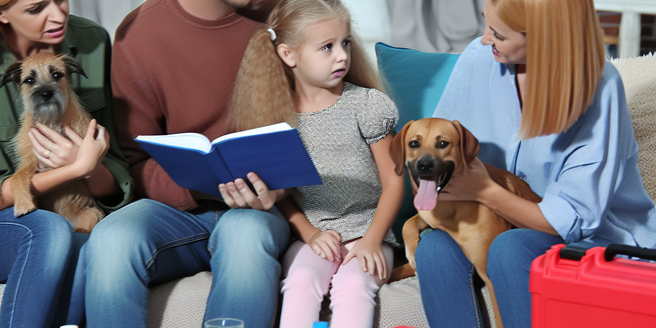
Understanding the Effect of Earthquakes on Pets
During an earthquake, pets experience fear, disorientation, and high levels of stress. Unlike humans, they don’t understand the nature of the event. Hence, they might react differently than they typically would under normal circumstances. They might hide, try to escape, or even become aggressive. Changes in their environment, including high-frequency vibrations, can have significant impacts on their behavior. In fact, these changes may lead to long term behavioral alterations if not properly addressed. Moreover, the destruction brought by earthquakes can affect pets’ ability to access their basic needs, such as water and food. Hence, understanding their reactions provides an essential foundation for planning protective measures.
Why is Emergency Preparedness Essential for Pets?
Emergency preparation is crucial because pets rely entirely on their human families for care and protection, especially during stressful and unexpected events like earthquakes. It’s not just human lives at stake, but those of our loyal companions as well. Pets are at great risk during these disasters as they might get lost, starved, or injured. In addition, pets can also suffer from severe anxiety and distress due to these harsh circumstances. Preparation will ensure that pets have access to food, water, and medical needs in the event of an emergency and provide a safer environment if evacuation is required. Failure to prepare might lead to dire consequences.
Most Common Hazards for Pets During Earthquakes
Pets face multiple hazards during earthquakes, like building collapses, fire outbreaks due to gas leaks, electrocution from downed power lines, harm from broken glass and fallen objects, and road accidents during panicked attempts to escape. Getting separated from their human families can be traumatic and significantly decrease their chances of survival. Equally worrying is that, amid all the chaos, pets may not be found quickly enough for essential medical treatment if required. Direct physical trauma caused by the shaking is another significant hazard. All these hazards underline the urgency of emergency preparation for pets.
Creating a Practical and Efficient Pet Emergency Plan
A practical pet emergency plan begins with identifying places to take your pet during evacuations, an emergency pet supply kit, and understanding your pet’s unique needs. Furthermore, being aware of your pet’s behavior during emergencies can help you respond most effectively. An often overlooked aspect is considering if any pets have special dietary restrictions or medical conditions that may require additional attention in emergencies. The plan should include contact information for your veterinarian, secure pet carriers, pet identification, food, water, and any necessary medications. Regularly rehearsing the plan is crucial. And importantly, it should complement rather than conflict with the broader family emergency plan.
Safety Gear: Essential Equipment to Protect Your Pets
Safety gear for pets can include sturdy, comfortable carriers, safety harnesses, and life vests for pets in flood-prone areas. In addition, a pet-sized life preserver could be crucial if your animal ends up in water unexpectedly. Flashlights or reflective collars are also important for better visibility in darkness or poor lighting conditions. Other essential equipment might include a first-aid kit, waste bags, collapsible food and water bowls, warm blankets, and specific medication. A bag of favorite toys or comforting items can help alleviate stress. This safety gear should be collected in an easily reachable place and regularly checked for expiry dates and updates.
Tips and Strategies: Training Pets for Earthquake Safety
Training your pets to respond to basic commands can be crucial in ensuring their safety during an earthquake. This type of training includes commands such as “stay”, “come”, and “quiet”. It allows pet owners to guide their pets away from danger, bring them back if they run off in panic, and keep them calm during the chaos. More specific training, such as familiarizing pets with their carriers, can also be handy in emergency evacuations. It is also beneficial to practice these commands in different environments to help the pet familiarize with various situations. Remember, the key lies in adaptability and preparation.
